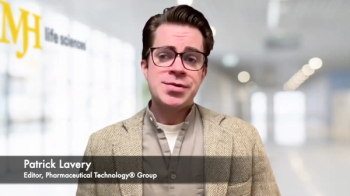
- Pharmaceutical Technology-03-02-2019
- Volume 43
- Issue 3
Can the Price Ever be Right?
As drug pricing comes under the microscope internationally, it appears that collaboration with all stakeholders is key to tackling the issue.
Editor's Note: This article was published in Pharmaceutical Technology Europe's March 2019 print issue.
As senior officials from seven Big Pharma companies recently faced the music in Washington, DC where senators quizzed them on increasing drug prices, the controversial and divisive topic has once again provided much ‘food for thought’.
Widely reported in the United States, there has been much discussion around the topic of rapidly increasing drug prices, something that President Trump has highlighted as a top priority during his tenure. Pharma companies have emphatically laid the blame at the door of the pharmacy-benefit managers, who have been criticized for using, what some believe to be, an arcane drug price stabilizing system in the rebate negotiations that they employ.
This Senate hearing was the first major one since 2016 when Mylan CEO, Heather Bresch, was questioned about the dramatic increase in the price of EpiPens (1). Executives from Abbvie, Merck, AstraZeneca, Bristol-Myers Squibb, Janssen, Pfizer, and Sanofi were all present at the committee hearing on 26 February 2019, where they specified that certain structural obstacles are in the way of lower drug costs. Although amenable to potential congressional-imposed ideas about lowering prices, there was also agreement among the executives that independently lowering prices was not feasible financially or operationally (2).
A global issue
Yet, it isn’t in the US alone where drug pricing has been under the microscope. Earlier this year, on the international stage, the executive board meeting of the World Health Organization (WHO) focused on the topic of drug pricing, in particular pricing of cancer drugs. During this meeting, held on 29 January 2019, WHO released a roadmap on access to medicines, vaccines, and health products (Agenda item 5.7.1), which outlines WHO’s work on access to medicines and vaccines across the period of 2019–2023 (3). This roadmap was requested during the 2018 World Health Assembly.
In response to the roadmap, Italy’s minister of health, Guilia Grillo, has provided a proposed ‘first draft’ resolution to improve the transparency of the pharma market, which she sent to Tedros Adhanom Ghebreyesus, the director general of WHO (4).
In Grillo’s letter, she specified that the draft resolution be discussed at the upcoming World Health Assembly, which will take place in May 2019, under the agenda item 11.7. “This resolution would provide WHO with the mandate to: collect and analyse data on clinical trial outcomes and adverse effects of health technologies; provide a forum for governments to share information on drug prices, revenues, R&D costs, the public sector investments and subsidies for R&D, marketing costs, and other related information; as well as provide crucial information on the landscape of patents on medical technologies, including information about disputes about the validity and/or relevance of asserted patents; and take further actions through meetings and for a designed to continue to make progress in this field,” she wrote (4).
The International Federation of Pharmaceutical Manufacturers & Associations (IFPMA), however, noted its disappointment in the area of pricing set out in the roadmap (5). In a statement, head of DG Office & Legal Issues, Grega Kumer, said, “… the roadmap takes a narrow approach by focusing on price transparency rather than on the broader context that enables better, sustainable financing policies. The unintended consequences of price transparency on the capacity of companies to offer preferential pricing to developing countries needs to be better understood before new work streams are created.”
Collaboration is key
A common theme across all discussions on the topic of drug pricing appears to be the necessity of collaboration to tackle the issue. As laid out by WHO in its roadmap (3), engagement with key stakeholders, such as international partners, research institutions, academia, donors, civil society, and the private sector will be key to finding solutions to health challenges, including pricing and affordability, and improving transparency.
As we approach a more intense period of innovation in bio/pharma, with more personalized medicines, gene and cell therapies, and orphan disease targets coming to the fore, it will be interesting to see if the issue of pricing is managed effectively or not.
References
1. PharmTech, “
2. NBC News, “
3. WHO, “
4. KEI Online, “
5. IFPMA, “
Article Details
Pharmaceutical Technology Europe
Vol. 31, No. 3
March 2019
Page: 5
Citation
When referring to this article, please cite it as F. Thomas, “Can the Price Ever be Right?" Pharmaceutical Technology Europe 31 (3) 2019.
Articles in this issue
over 6 years ago
Tablet Press Refurbishment: Why and How?over 6 years ago
Embracing the Digital Factory for Bio/Pharma Manufacturingover 6 years ago
Caught in a Conundrumover 6 years ago
Strategic Screening for Solubility Solutionsover 6 years ago
Monoplant: Advantages of a Dedicated Facilityover 6 years ago
Handle with Careover 6 years ago
Rising to the Challenge of Biologic Drug Formulationover 6 years ago
Europe Pushes for Global Easing of Generics Approvalsover 6 years ago
Key Considerations in Stability TestingNewsletter
Get the essential updates shaping the future of pharma manufacturing and compliance—subscribe today to Pharmaceutical Technology and never miss a breakthrough.





